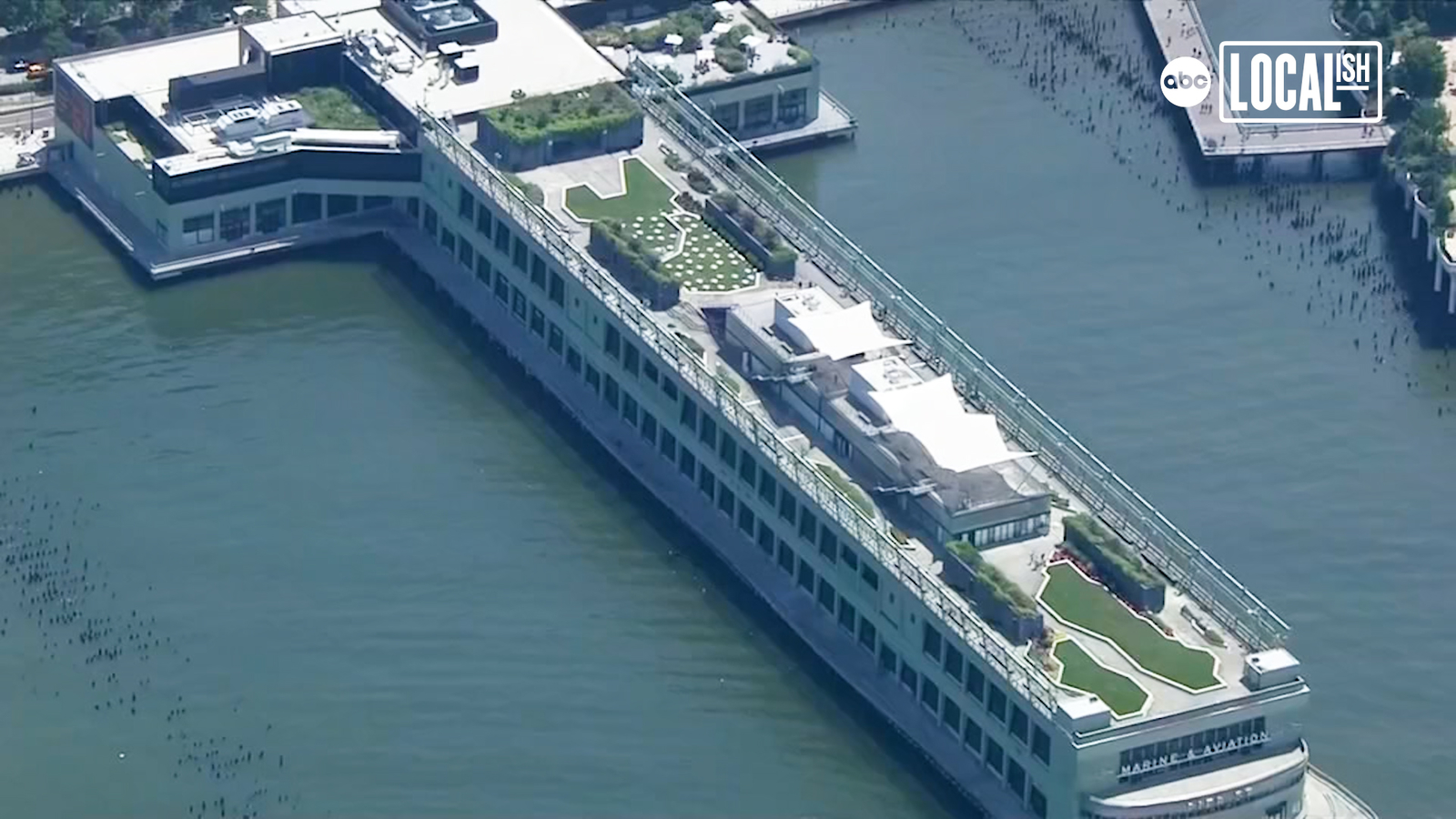NEW YORK, New York — It is an urban oasis on hot days, a place to sit outside among the towering concrete and glass skyscrapers of New York City, away from the commotion on the street below.
But this 2.5-acre rooftop green space atop Pier 57 is more than just pretty foliage and finely manicured lawns.
“It’s an environmentally friendly roof,” said Bill Elder EVP, Managing Director, RXR. “This is actually an adaptive reuse building. So, you talk about environmentally friendly. The structure that was already here was never taken down, it was just repurposed.”
Green rooftop spaces, like at Pier 57 on Manhattan’s West Side, or the Barclays Center in Brooklyn, are champions of change, climate change, that is.
“We find that having this two and a half acres of green tends to keep the building cooler than if there was just a standard rooftop here,” said John Ambrosini Sr., the property manager of Pier 57.
That’s because the rooftop greenery insulates the building. And that’s not all, it absorbs rainwater during storms and helps treat dirty air. But, maybe most importantly, it combats the urban heat island effect.
Urban heat islands are locations where buildings, roads, and parking lots cause it to be warmer than outlying areas. Think about New York City, a concrete jungle. It’s everywhere and it absorbs and retains heat while the sun is up radiating it back into the surrounding air.
“We’re so over-paved in so many ways. It doesn’t allow the Earth to pick up some of that heat. So we have higher temperatures here in the city than you would outside the city,” said Daniel Zarrilli, chief climate and sustainability officer at Columbia University.
As a result, a New York City block feels, on average, almost 10 degrees warmer than a rural area nearby.
“Green roofs take a lot of the heat out of … you walk around today is pretty warm, it would be a lot warmer if this was all concrete structure,” Elder said.
New York City is home to over 700 buildings with green roofs, a majority of which are in lower Manhattan.
But, of the roughly 1 million buildings in New York City, those represent less than a tenth of 1%.
“There is a real shortage of it. When you look at streets that are stripped of trees or public places that are built to be concrete hardscapes, they are simply not as welcoming and inviting. That’s not where people want to be,” said Robert Atterbury of the Hudson River Park Trust.
In a city where something is crammed into seemingly every nook and cranny, rooftop space is a mostly untapped real estate market.
That space could hold the key to making our home more resilient in the face of our ever-changing climate.
